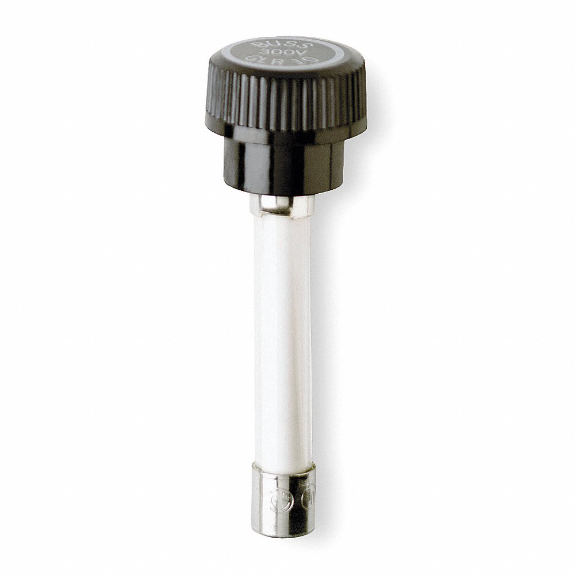Bussmann GLR-3 fuse is ideal for safeguarding equipment and wiring from overcurrent conditions by interrupting the flow of current in the event of a fault, preventing damage and potential hazards in commercial and industrial settings.
Features:
- This fuse is integrated with a knob into a single unit for durability and streamlining maintenance.
- It allows easy insertion of 18 AWG insulated solid copper wire into the load side terminal for simple setup and ensuring secure connections.
- This Bussman GLR 3 fuse offers an interrupt rating of 10kAIC at 300VAC to effectively interrupt the current flow in the event of a fault.
- It has a cylindrical design that easily integrates to compact electrical setups.
- This fuse features a glass body for clear visual indication, simplifying troubleshooting and maintenance processes.
- Also check out Bussman GLR-15 fuse with a higher current rating of 15A for high load electrical system.
Frequently Asked Questions:
Q. What is the difference between a circuit breaker and a fuse?
A. A circuit breaker lies an internal switch that triggers when an excessive current is detected, whereas a fuse consists of a metal component that melts under the strain of surplus current, thus safeguarding the circuit.
Q. How to inspect Bussmann GLR-3 fuse?
A.
- Ensure the power to the circuit is turned off before attempting to check the fuse to avoid electric shock or damage.
- Examine the fuse visually. If the glass casing is broken, the fuse is likely blown and needs replacement.
- If the fuse appears intact, you can use an ohmmeter or multimeter to test its continuity.
- If you have a multimeter with a voltage setting, you can test the voltage across the fuse terminals while the circuit is powered on (if safe to do so). A reading of close to zero volts indicates a functional fuse, while a higher voltage reading indicates a blown fuse.
- If the fuse is blown or exhibits signs of damage, replace it with a new Bussmann GLR-3 fuse of the same current rating.
 Change Country
Change Country

 In Stock : 113 Units
In Stock : 113 Units